Abalone Shell Spiritual Meaning: From Cross-Culture Indigenous Use To Modern Spiritual "Smudging".
Abalone Are a Very Successful, Ancient Mollusk.
Originated in the Cretaceous period, between 145 and 100 Million years ago, Abalone shells have 57 known species. They are endemic to colder waters of temperate coastlines in countries as distant as Australia, Tasmania, South Africa, North America, New Zealand, France, and even semi tropical waters like the Philippines.
Indigenous use of the shell as a food source was widespread, with the meat still regarded today as a high-price delicacy. Abalone are also found in tribal arts, crafts and jewelry for their famed iridescence, that varies greatly from one species to the next.
Indigenous Significance In North America.
The word Abalone originates in North American Indian tribes. The largest species in the world, known as the Red Abalone, was harvested along the North West Coastlines, reaching up to 1 foot in size... legend has it that they could clamp the hand of the unfortunate mollusk hunter, doomed to drowning as a result. 2 sperate species also inhabited those shores, referred to as the Black Abalone and White Abalone.
Used for currency by numerous tribes, abalone shells and shell pieces were found alongside turquoise and other mineral gems in jewelry and tribal art.
There is no doubt that coastal tribes all had they own mythical story celebrating the spiritual significance of abalone. The Apache Nation's Tale is truly Iconic: The shell was used in ceremonies of passage from puberty to womanhood. The spiritual power of Abalone is even thought to carry the connection between generations, as it is worn by young women on their forehead, enhancing their spiritual and healing powers.
Abalone Shells For Smudging
Widespread in North West American spiritual ceremonies was the burning of sage. Long considered as a powerful way to repel bad spirits, sage burning was also believed to help with common ailments like sore throats, digestive issues, and even bouts of depression. Widely known as smudging, the ritual was performed by using abalone shells as sage holders.
In the last 4 to 5 years, smudging has seen a huge resurgence in North America, now making ripples in the UK, Europe and Australia. The FAD was even recognized for being rife among TikTok users, as native spiritual practices once again became a refuge for the modern mind.

Inevitably, the trend gave birth to a new "smudging industry", and sparked renewed demand for raw abalone shells, with the largest numbers being sourced in New Zealand. Why New Zealand? Mainly thanks to the reasonably well managed Abalone (Paua) Fisheries, ensuring steady and ethically harvested supply: a MUST for this "spiritual" clientele.
New Zealand Abalone Paua in Maori Culture.
Paua is the Maori name for the very unique New Zealand Abalone Species. Tangaroa, the god of the sea, gave the Paua its shell as a protective shield that reflected the forest greens, the deep ocean blues, the sunset violets and dawn pinks. But those colors were concealed inside the shell until it eventually washed onto the shores of Aotearoa.
With its opal like shimmer, Paua inspired Maori art and Jewelry. Even today, iridescent circles cut directly from the Paua shell are sought after by artists and sculptors. They feature as the vivid, watchful eyes in Rimu statues of traditional figures.
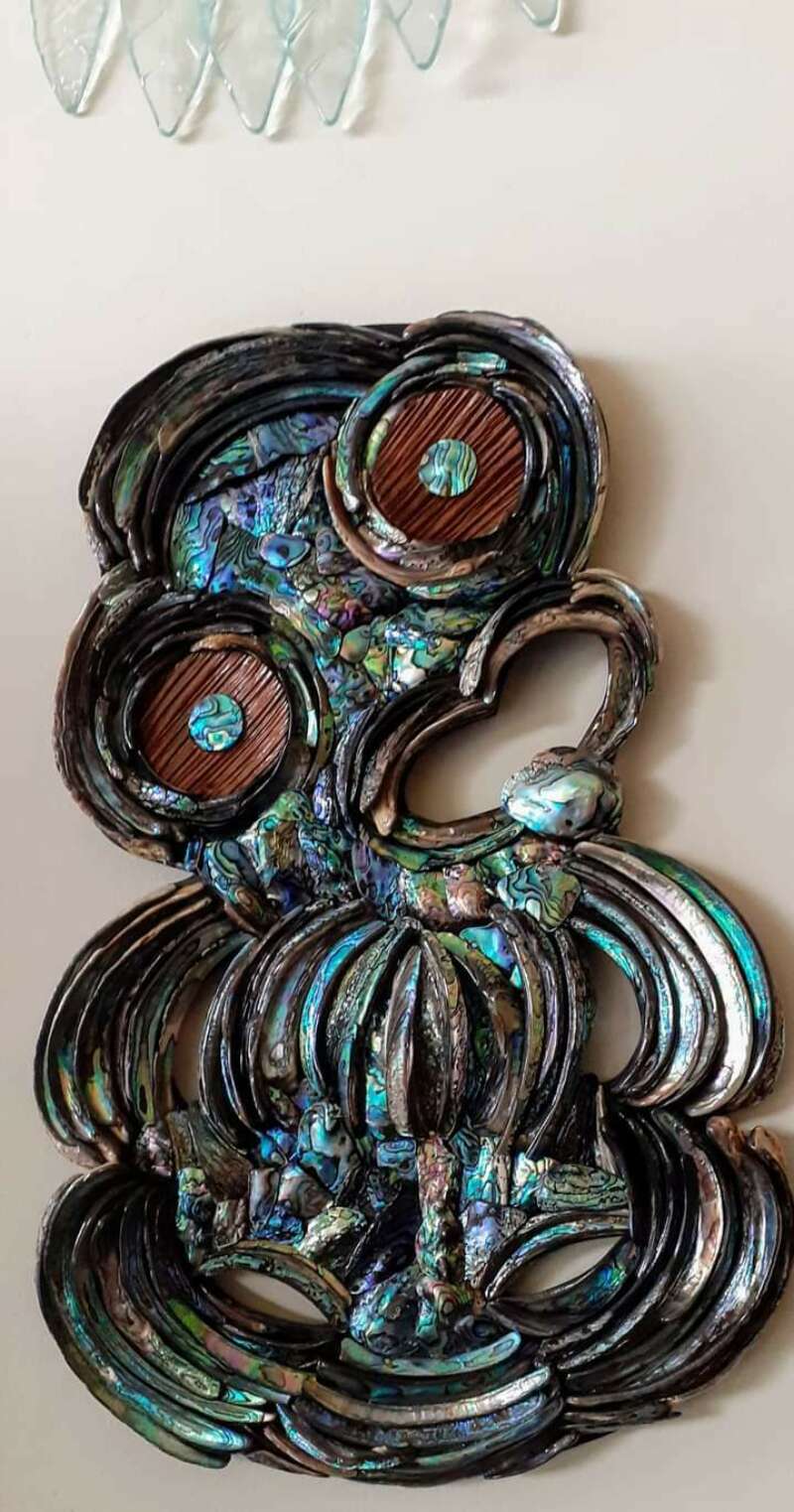
Traditional use included fishing lures and currency coinage from polished Paua. The meat was dried or preserved to be gifted or traded from coastal to inland tribes, along with jewelry made with whole shells or uniquely shaped, ocean tumbled shell pieces.
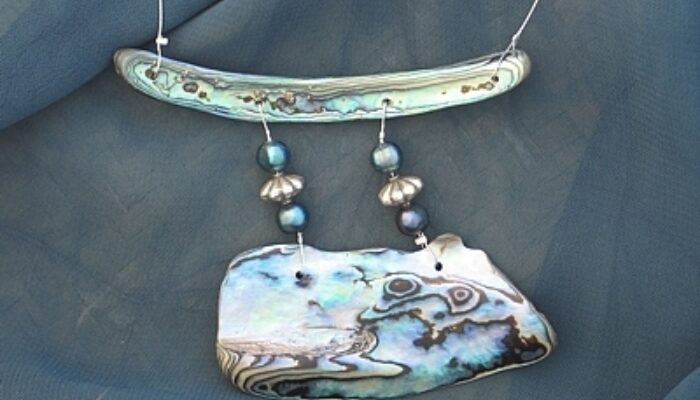
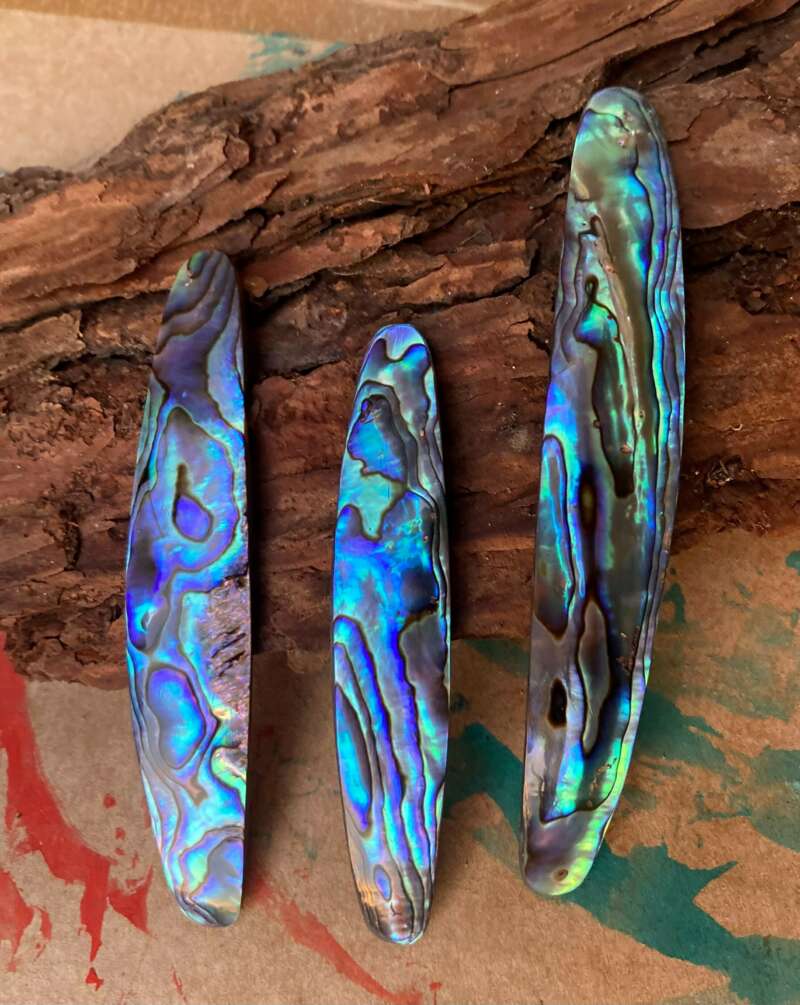
Even if you are not drawn to deeply spiritual meanings, you will no doubt be sensitive to the calmness experienced when immersing you eyes into the everchanging reflections of Paua shell. Today our attraction to beach walking and seashell collecting is a reminiscence of ancestral connection to Abalone and Mother of Pearl. Perhaps that is why our modern creative industries often allow space the shimmers of Paua in their pursuit of unique beauty.
Today, Maori Art is alive and well. As explored in our earlier blog post Shell laminate sheets have opened up more possibilities, with flourishing styles in wall art and sculptures, retaining a traditional flavor.
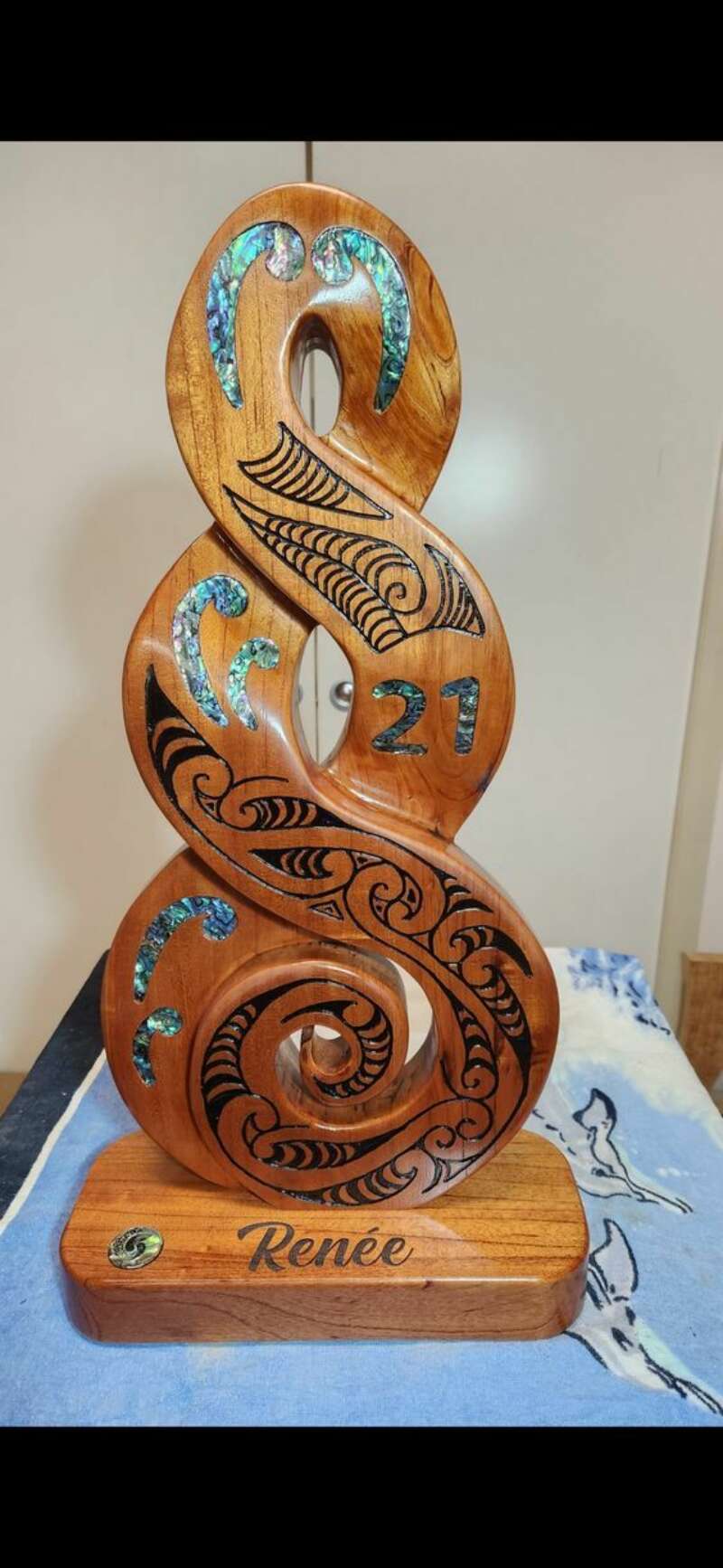
Outdoor sculpture in has also seen new inspirations, here featuring Pure White Oamaru Stone with Paua veneer in a very contrasting creation.
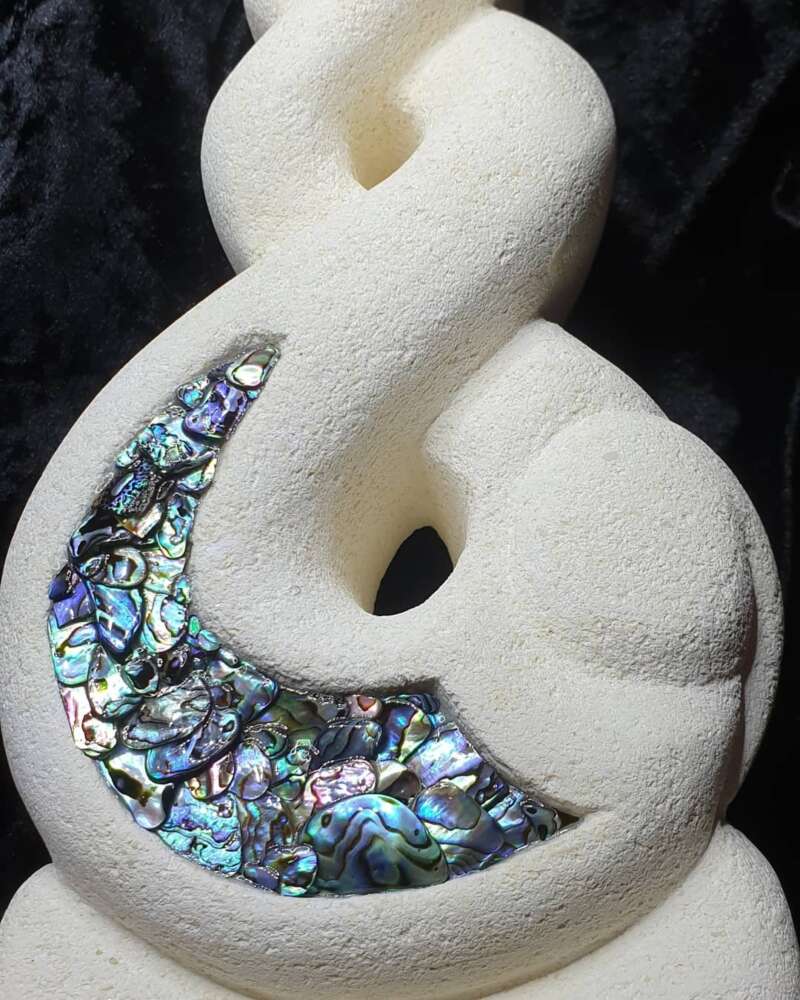
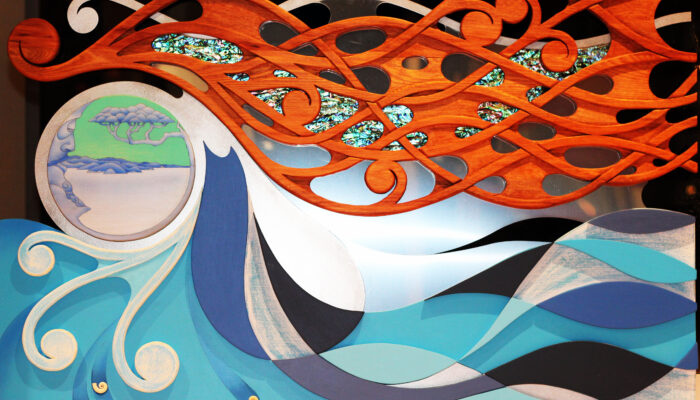
Abalone Paua Crosses The Pacific, to The Rescue of Native American Traditional Art.
Navajo Art uses turquoise, opal and other gems for their flamboyant colors. As it turns out, the New Zealand Abalone has long attracted the eye of traditional and more modern craft and jewelry designers in North America. There are indeed many similarities in color tones. I addition, Paua gems have those unique black lines, like contour lines on a topographical map, a real distinction from minerals.
In more recent times, a new connection has developed between Indian tribal art and the New Zealand Abalone Paua: Threatened by overfishing on the North American coastlines, abalone shells are now strictly protected and extremely difficult to source.
In New Zealand, thanks to early regulation and wild weather patterns on our coastal regions, depletion of our fisheries has been averted so far. We were sighted as an example by other abalone nations at the International Abalone Symposium in Auckland, February 2023.
For the last few years, Ocean Shell Ltd have supplied North American Indian Art resellers, filling the gap left by the disappearance of Red Abalone. Whole Paua Shell, Raw or Polished, as well as tumbled satin shell pieces and laminated shell "veneer" sheets, are now popular items for designers and makers across the Pacific.
As an example, the Canadian company Culture Shock Jewelry richly combines the use of turquoise with Paua inserts in silver casing, sometimes adding resin casting for 3D effect. New Zealand Abalone Paua was fully adopted by Native American designers, despite its distinct colors. This trend is equally present in Canada and North America.
With such a strong significance in the spirit of native and modern North America, it is quite fitting that their word "Abalone" is still used for all species found around the world.


Tell us about your project...
Your project is unique, so we provide personalised advice before delivering worldwide from our studio in New Zealand.
Luméa products are made from natural shell with a variety of factors that affect form and function. If you can’t find the right product from within our range, then talk to us about our custom design service. We love to experiment and collaborate with our partners to create unique solutions.